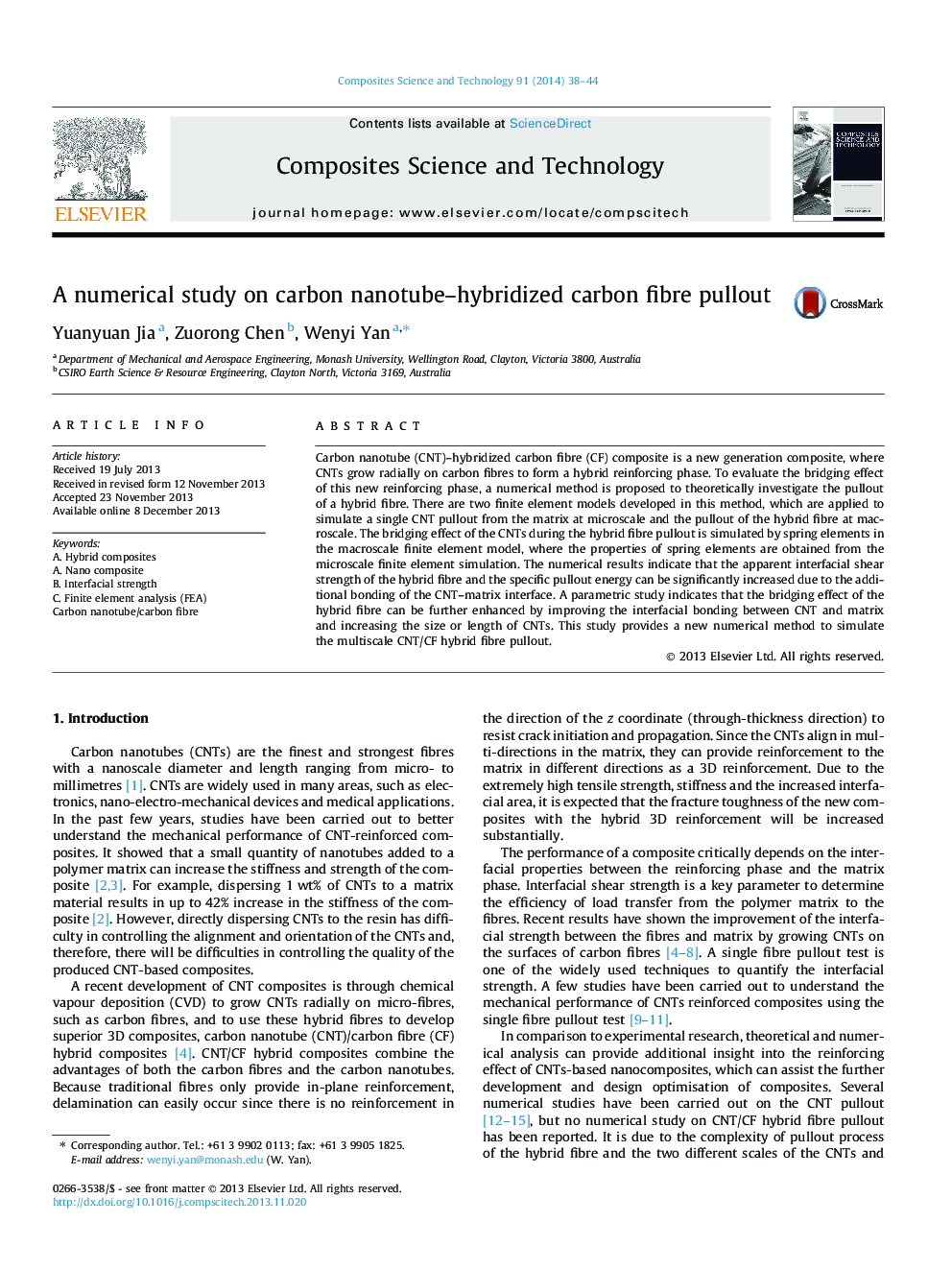| Article ID | Journal | Published Year | Pages | File Type |
|---|---|---|---|---|
| 820391 | Composites Science and Technology | 2014 | 7 Pages |
Carbon nanotube (CNT)–hybridized carbon fibre (CF) composite is a new generation composite, where CNTs grow radially on carbon fibres to form a hybrid reinforcing phase. To evaluate the bridging effect of this new reinforcing phase, a numerical method is proposed to theoretically investigate the pullout of a hybrid fibre. There are two finite element models developed in this method, which are applied to simulate a single CNT pullout from the matrix at microscale and the pullout of the hybrid fibre at macroscale. The bridging effect of the CNTs during the hybrid fibre pullout is simulated by spring elements in the macroscale finite element model, where the properties of spring elements are obtained from the microscale finite element simulation. The numerical results indicate that the apparent interfacial shear strength of the hybrid fibre and the specific pullout energy can be significantly increased due to the additional bonding of the CNT–matrix interface. A parametric study indicates that the bridging effect of the hybrid fibre can be further enhanced by improving the interfacial bonding between CNT and matrix and increasing the size or length of CNTs. This study provides a new numerical method to simulate the multiscale CNT/CF hybrid fibre pullout.
